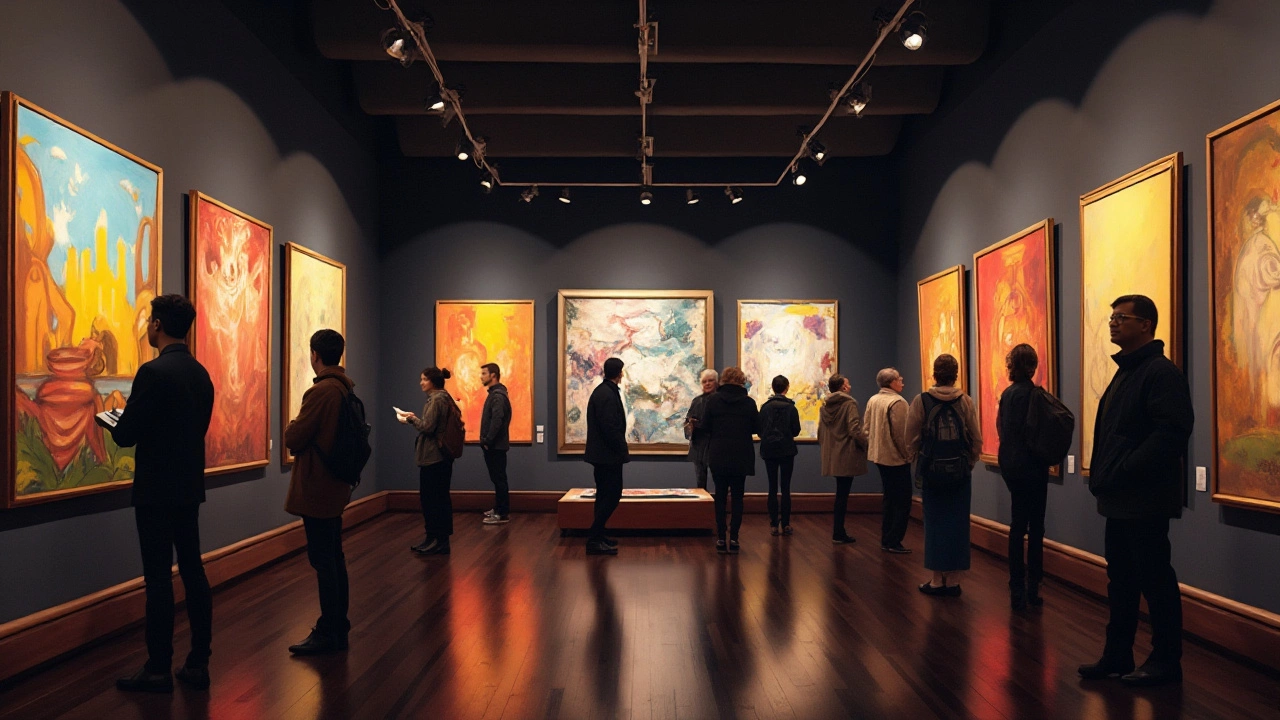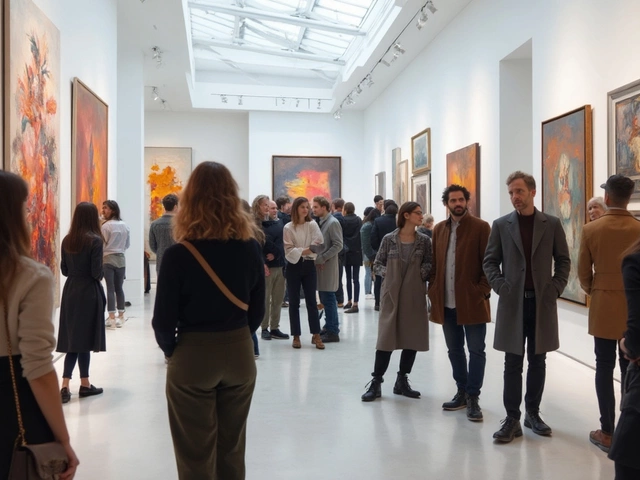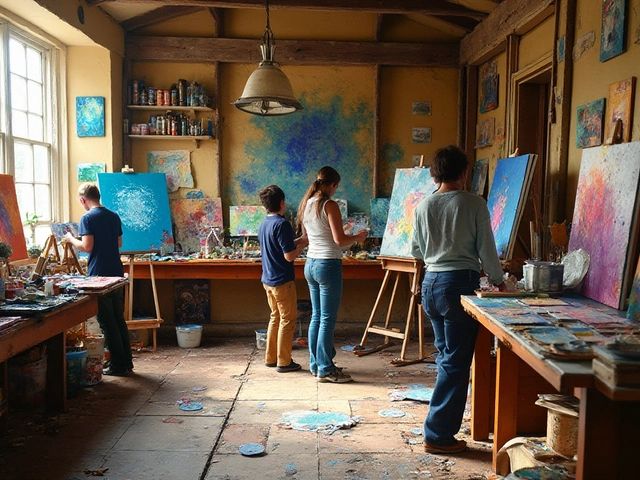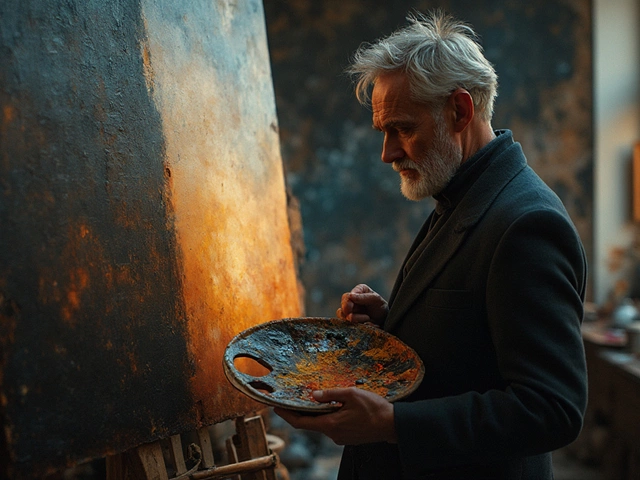Abstract art stands as a bold departure from traditional forms of art, choosing instead to forge its own path through color, shape, and emotion. But what chemicals of the mind erupt when we gaze at these creations? How do artists conjure such works, and why do they evoke deep responses even when they avoid the known and familiar?
This journey into the world of abstract art uncovers the profound relationship between formless representation and the human psyche. As we delve into the psychology behind abstract art, we unravel theories that not only empower artists but also illuminate the mysterious allure that captivates audiences, leaving room for personal interpretation and emotional resonance. Whether you're an artist seeking inspiration or an enthusiast craving deeper connections, this exploration offers a fresh perspective on an art form that defies convention.
- The Essence of Abstract Art
- Psychological Theories and Insights
- Impact on Artists and Viewers
- Engaging with Abstract Art
The Essence of Abstract Art
The world of abstract art is one where traditional boundaries of creation dissolve, giving rise to something wondrous and unexpected. Unlike classical representations that focus heavily on realism, abstract art ventures into the realms of color, emotion, and the unconscious, making it a unique form of expression. This genre, which saw significant development in the early 20th century, urges artists to explore ideas that lie beyond the visual constraints of reality. By freeing themselves from literal depiction, artists are granted the liberty to communicate concepts, feelings, and notions that conventional subjects might otherwise restrict.
It was Wassily Kandinsky, an influential figure in abstract expressionism, who famously said, "Color is a power which directly influences the soul." Kandinsky's belief encapsulates the core philosophy of abstract art, as it draws from emotions just as much as it contributes to them. The shift from objective to subjective felt like an emancipation – a return to a primal form of expression where instincts, rather than rules, held sway. The power of abstract art is not in the precise depiction but in the inexplicable allure of shapes and shades that transcend the viewer’s conscious interpretation. Such art is about the harmony of sensations rather than ideas, bringing a silent symphony to the viewer's soul.
Within this genre, famous works have emerged, such as Jackson Pollock's iconic drip paintings. These masterpieces are characterized by their spontaneity and dynamic energy, making them some of the purest examples of expression without constraints. Their sheer unpredictability strikes a nerve, stirring feelings that lie dormant in the everyday patterns of life. This was a technique that redefined the relationship between the artist and the canvas, transforming it into an arena for instinctive action rather than meticulous planning. Abstract art often encourages audiences to become participants, as their interpretations infuse the work with novel significance each time it is viewed.
Much of the appeal of abstract art lies in its open-ended nature. When observing a piece, one's mind is invited to wander beyond the immediate and familiar, creating a dialogue between the artwork and the subconscious. The blend of personal experience and perception can lead to vastly different reactions among viewers. Experts often suggest approaching abstract art with an open mind, allowing one's intuition to guide the reception of the work. Over time, viewers can find themselves more attuned to the language of abstraction, discerning subtle differences and nuances that may have been overlooked at first glance.
Facilitating an understanding of abstract art involves not only appreciation of the obvious but also recognition of the subtle conversations between the elements within the piece and the emotions they evoke. To truly embrace this form of art, remember it's about connection, reverence, and the willingness to allow one's imagination to dance unchained, finding resonance in the unpredictable heartbeat of abstraction itself.
Psychological Theories and Insights
Abstract art challenges our assumptions and beckons a deeper look into how our minds perceive the world. This artistic form taps into a rich tapestry of psychological theories, each attempting to unravel why these pieces resonate so profoundly with the human psyche. The abstract form goes beyond the recognizable, drawing on our innate creativity and need for meaning-making, allowing viewers to interpret art on a personal level. At its core, abstract art illuminates the variance in human cognition, illustrating how individuals perceive the same stimuli but through entirely different lenses.
Gustav Fechner, an early psychologist, laid foundational work with his observations on the aesthetics of form and color, paving the path for more intricate studies. The Gestalt principles also play a crucial role in understanding abstract art by highlighting how the human brain tends to perceive holistic patterns rather than disjointed parts. This is central to why a seemingly chaotic splash of color can evoke a strong sense of harmony or discord. By tapping into these natural perceptual tendencies, abstract artists create worlds within which viewers' minds can wander freely.
Carl Jung explored the depth of the unconscious and its manifestations, suggesting that abstract art connects with this hidden reservoir of symbols and archetypes. He postulated that these visual creations could act as a bridge to the innermost parts of our mind that are usually concealed by our rationality. In this context, abstract art becomes a journey, an exploration, and a discovery of one's inner world. Jung remarked, "Every human being is an artist, a creator in their own domain," hinting at how abstract artistry can ignite the creative spark inherent in us all.
Aesthetic Emotion and Cognitive Engagement
The emotional impact of abstract art is not just about what is on the canvas but about what it stirs within the viewer. Fascination, awe, confusion, delight—these are just a few of the myriad responses that abstract art can evoke. This emotional engagement often demands an active cognitive process. When one views an abstract piece, the mind sifts through ideas, past experiences, and emotions to forge a personal connection with the art. A study conducted by the International Journal of Art and Design Education found that engaging with abstract art stimulates complex cognitive processes, which can lead to enhanced creativity and improved problem-solving abilities.
| Emotion | Stimulus |
|---|---|
| Curiosity | Vibrant, contrasting colors |
| Nostalgia | Soft, blurred edges |
| Intrigue | Contradictory shapes |
The Neuroscience Behind Abstract Perception
Delving deeper into the mental mechanics, research in the field of neuroscience has spotlighted how abstract art activates a network of brain regions responsible for imagination, memory retrieval, and visual processing. This is substantial evidence that interacting with abstract art doesn't merely influence our emotional world—it actively engages our cognitive faculties. When an individual processes an abstract piece, the brain oscillates between known references and novel interpretations, offering a refreshing mental exercise. According to a study from the University of Vienna, viewing abstract art can enhance neural plasticity, making us more adaptable thinkers. This aligns with the growing recognition of abstract art's potential to foster mental well-being and cognitive flexibility.
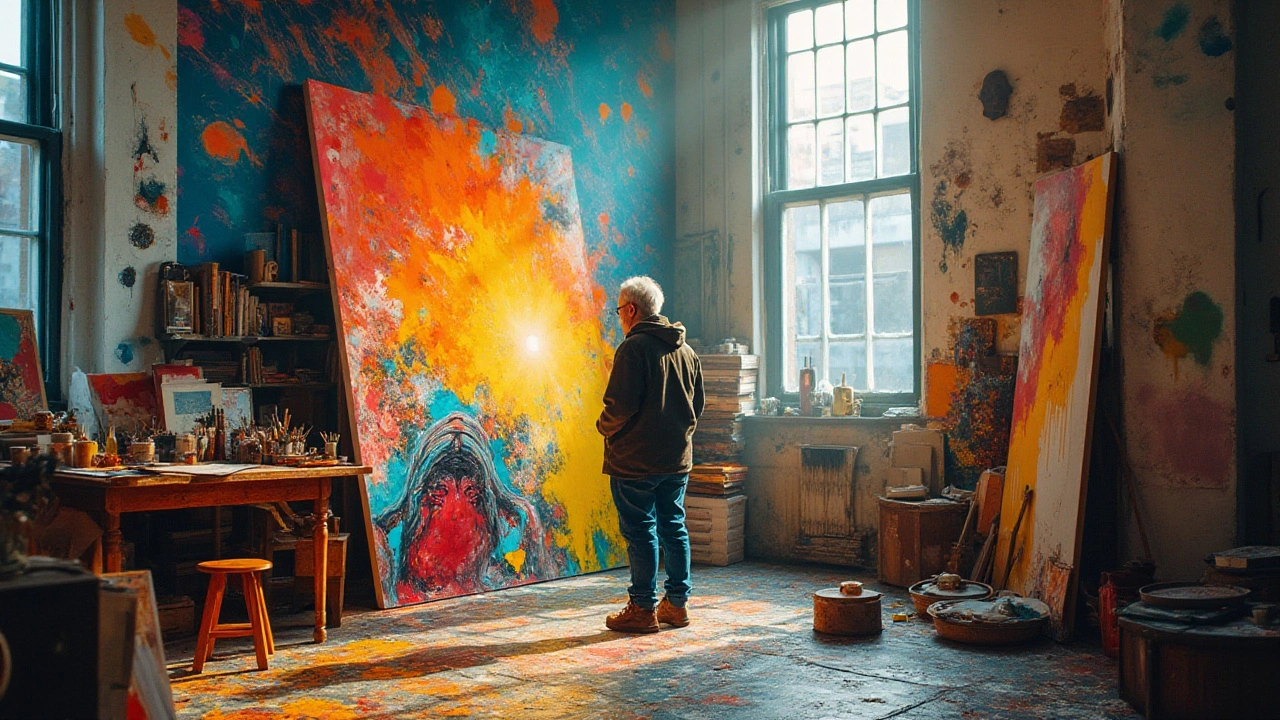
Impact on Artists and Viewers
The world of abstract art offers a transformative experience not just for those who create it, but also for those who engage with it. For artists, abstract art presents a unique canvas that transcends boundaries of literal interpretation. Their minds are unfettered by the obligation to represent reality, allowing unparalleled freedom to experiment with color, texture, and form. This can be incredibly liberating, serving as a powerful outlet for expressing subconscious emotions and exploring different facets of their identity. The very act of creating abstract art can be a therapeutic process, enabling artists to channel complex emotions into visual form, which can be particularly rewarding and cathartic.
Meanwhile, for viewers, abstract art can challenge and expand the boundaries of perception. Unlike representational art that lays its meaning bare to the onlooker, abstract art invites personal interpretation. Each viewer becomes an active participant in the narrative of the artwork, as they bring their individual experiences, thoughts, and emotions to bear on what they see. This interaction can result in a multitude of interpretations, each as valid as the next, essentially making the viewer co-creators of the artwork's meaning. Such engagement can foster introspection and invoke a heightened emotional response, offering a stark contrast to the more passive consumption of traditional forms of art.
Dr. Ellen Winner, a prominent psychologist, notes that "abstract art beckons us to search beyond the immediate and discover the hidden layers beneath."
A study published in the Journal of Experimental Psychology found that viewers of abstract art often experience stimulation of areas in the brain associated with creativity and problem-solving, more so than when viewing figurative art.This illustrates the complex interplay between cognition and emotion, highlighting the artwork's ability to provoke and challenge the viewer's usual interpretative faculties.
For both artists and audiences, the impact of abstract art extends beyond the confines of the canvas or gallery. It engenders a dialogue that is deeply personal yet universally accessible. By engaging with abstract art, individuals can experience a form of communication that is unrestricted by language, culture, or conventional narratives. In a world often governed by rules and routine, abstract art opens up a refreshing space of infinite possibilities, where both uncertainty and discovery hold sway.
Engaging with Abstract Art
Abstract art presents viewers with a unique challenge and an opportunity to explore the depths of their own emotions and thoughts. The beauty of abstract art is that it often lacks a direct narrative, allowing individuals to take a personal journey into the artwork. When engaging with abstract art, one might start by observing the piece from a distance, letting the colors and shapes seep into their consciousness. As they draw closer, the immediate presence of brushstrokes and techniques used by the artist becomes more pronounced. This process of moving ‘into’ the artwork can provide a mental space where one's feelings and interpretations unfold naturally.
It is important to approach abstract art with an open mind. Pre-existing notions and biases can filter our perception, potentially stifling our experience. Instead, viewers are encouraged to reflect on what specific elements of the piece evoke certain emotions or memories. This not only increases personal engagement but fosters a deeper understanding of one's own psyche. Engaging with abstract art can be likened to meditation—both requiring patience, attentiveness, and introspection. In this meditative state, individuals may find themselves relating the artwork to their own life experiences in unexpected ways, effectively using the art as a mirror to their subconscious mind.
"Abstract art enables the artist to perceive beyond the tangible, to extract the infinite out of the finite. It is the emancipation of the mind. It is an explosion into unknown areas." - Arshile Gorky
An additional method of engaging is through the context of the psychology behind the artwork. Artists often inject their emotions, thoughts, and societal commentaries into their works. Understanding the historical and cultural context in which the artwork was created can also enrich the viewing experience. Did the artist work during a time of great social upheaval? Was this piece a response to personal turmoil or joy? Knowing these details can transform how an artwork is perceived, allowing viewers to connect on a level that transcends mere aesthetics.
For those new to abstract art, beginning with simpler exercises can be beneficial. Try spending dedicated time with a single piece, allowing no other distractions for a set period. Record the thoughts and feelings that arise, creating a dialogue with the painting. Another exercise involves introducing abstract art into daily life, possibly through wallpapers, prints, or sculptures, making it a constant companion that can subtly influence mood and creativity. Engaging with creativity in such a manner can enhance one's appreciation for this unconventional art form.
